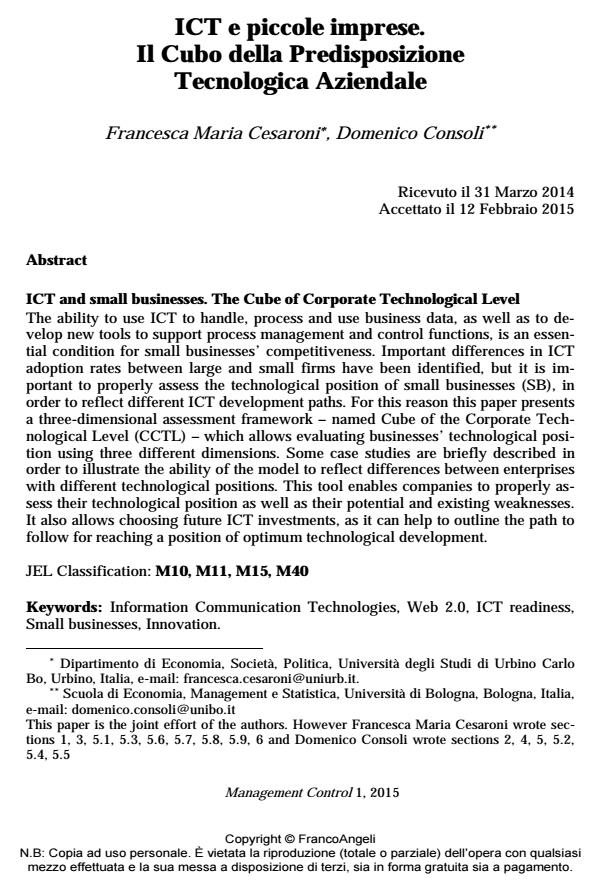ICT e piccole imprese. Il Cubo della Predisposizione Tecnologica Aziendale
Titolo Rivista MANAGEMENT CONTROL
Autori/Curatori Francesca Maria Cesaroni, Domenico Consoli
Anno di pubblicazione 2015 Fascicolo 2015/1
Lingua Italiano Numero pagine 28 P. 73-100 Dimensione file 164 KB
DOI 10.3280/MACO2015-001004
Il DOI è il codice a barre della proprietà intellettuale: per saperne di più
clicca qui
Qui sotto puoi vedere in anteprima la prima pagina di questo articolo.
Se questo articolo ti interessa, lo puoi acquistare (e scaricare in formato pdf) seguendo le facili indicazioni per acquistare il download credit. Acquista Download Credits per scaricare questo Articolo in formato PDF

FrancoAngeli è membro della Publishers International Linking Association, Inc (PILA)associazione indipendente e non profit per facilitare (attraverso i servizi tecnologici implementati da CrossRef.org) l’accesso degli studiosi ai contenuti digitali nelle pubblicazioni professionali e scientifiche
The ability to use ICT to handle, process and use business data, as well as to develop new tools to support process management and control functions, is an essential condition for small businesses’ competitiveness. Important differences in ICT adoption rates between large and small firms have been identified, but it is important to properly assess the technological position of small businesses (SB), in order to reflect different ICT development paths. For this reason this paper presents a three-dimensional assessment framework - named Cube of the Corporate Technological Level (CCTL) - which allows evaluating businesses’ technological position using three different dimensions. Some case studies are briefly described in order to illustrate the ability of the model to reflect differences between enterprises with different technological positions. This tool enables companies to properly assess their technological position as well as their potential and existing weaknesses. It also allows choosing future ICT investments, as it can help to outline the path to follow for reaching a position of optimum technological development.
Parole chiave:Information Communication Technologies, Web 2.0, ICT readiness, Small businesses, Innovation.
Jel codes:M10, M11, M15, M40
Francesca Maria Cesaroni, Domenico Consoli, ICT e piccole imprese. Il Cubo della Predisposizione Tecnologica Aziendale in "MANAGEMENT CONTROL" 1/2015, pp 73-100, DOI: 10.3280/MACO2015-001004